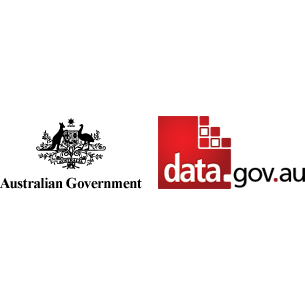Brief description
## **Abstract**The dataset was derived by the Bioregional Assessment Programme from multiple source datasets. The source datasets are identified in the Lineage field in this metadata statement. The processes undertaken to produce this derived dataset are described in the History field in this metadata statement.
The long term average diffuse recharge rate for the Clarence-Morton Basin was determined using upscaled point estimates from chloride mass balance for the porous rock areas and empirical relationships for the alluvial areas. The chloride mass balance is a simple method of estimating recharge because it only relies upon knowing the chloride deposition from rainfall and the chloride concentration of the groundwater. It can be used if all sources of chloride can be accounted for (in this case assumed to come from rainfall). Where the source of chloride could also be from interactions from the stream network or upward flow from deeper layers the empirical equations developed by Wohling et al (2012, HESS) were used for estimating recharge.
Point estimates of recharge were made using the chloride mass balance and split into three groups, Tertiary Volcanics, Walloon Coal Measures and everything else. The data were sparse and did not have a complete geographical coverage of the area of interest (374 point estimates), so the recharge estimates had to be upscaled using annual average rainfall as a co-variate rather than by interpolation. To achieve this, relationships were developed between the average annual rainfall and log transformed average annual recharge.
The empirical equations developed by Wohling et al (2012, HESS) are based on field estimates of recharge from across Australia, they relate average annual recharge to average annual rainfall, vegetation type and soil type.
## **Purpose**
The purpose of this recharge data set is as an input into the numerical groundwater modelling for the Clarence-Morton Basin.
## **Dataset History**
The chloride in groudwater data was sourced from the 'CLM - Bore water quality NSW' and 'CLM - Bore water quality QLD' datasets, this data was accepted for further processing if it was in an outcrop area (i.e. the stratigaphic layer that the screen was in was the same as the surface geology). Where there were multiple chloride analyses in the same bore over time, the geometric mean of the the samples was taken. The chloride deposition data was sourced from the 'Australian 0.05º gridded chloride deposition' dataset, the chloride deposition was extracted from this raster for each of the locations with chloride in groundwater data. The point scale recharge is calculated as R = D / Cg where R is the recharge, D is the chloride deposition and Cg is the chloride in groundwater. The point scale recharge estimates were split into three groups based upon the surface geology, these groups were the Tertiary Volcanics, Walloon Coal Measures and everything else.
As the point estimates of recharge were too sparse to be interpolated directly, they were upscaled using average annual rainfall as a co-variate in each of the three surface geology groups. The rainfall data was sourced from 'BOM, Australian Average Rainfall Data from 1961 to 1990'. The upscaling was achieved using the equation log(R) = a.P + b where log(R) is the log transform of the average annual recharge, P is the average annual rainfall and a and b are fitting parameters that were fitted using a least squares regression. The surface geology and rainfall were transformed to a regular 100 m grid and with the regression equation for each surface geology group a regular 100 m grid of average annual recharge was created.
## **Dataset Citation**
Bioregional Assessment Programme (2015) CLM - Groundwater Recharge Estimates - Chloride Mass Balance technique v01. Bioregional Assessment Derived Dataset. Viewed 09 October 2017, http://data.bioregionalassessments.gov.au/dataset/41ad36ae-9399-439d-9e1c-ec55fa2058c4.
## **Dataset Ancestors**
* **Derived From** [CLM - Bore water quality QLD](https://data.gov.au/data/dataset/d6ca6f6b-a97d-49f3-a3b7-8301b407d864)
* **Derived From** [CLM - Bore water quality NSW](https://data.gov.au/data/dataset/ff80d48d-0db8-4532-af2b-8167412574d0)
* **Derived From** [Natural Resource Management (NRM) Regions 2010](https://data.gov.au/data/dataset/1d54e38f-4051-4f0c-a350-c7dbd8eba65b)
* **Derived From** [Bioregional Assessment areas v03](https://data.gov.au/data/dataset/96dbf469-5463-4f4d-8fad-4214c97e5aac)
* **Derived From** [BOM, Australian Average Rainfall Data from 1961 to 1990](https://data.gov.au/data/dataset/fd91f2d4-2cc8-4d5d-9f67-8fe8af1e2676)
* **Derived From** [Australian 0.05º gridded chloride deposition v2](https://data.gov.au/data/dataset/c1649bd7-227f-41ff-9964-b55479bef640)
* **Derived From** [QLD Department of Natural Resources and Mines Groundwater Database Extract 20142808](https://data.gov.au/data/dataset/a5c5cbdb-1152-43f7-9533-a123027b7ce1)
* **Derived From** [Bioregional Assessment areas v01](https://data.gov.au/data/dataset/0fd0d820-30b3-451f-a126-a50040426999)
* **Derived From** [Bioregional Assessment areas v02](https://data.gov.au/data/dataset/e414b1b3-c42e-42e9-9cc4-2093054aa35f)
* **Derived From** [GEODATA TOPO 250K Series 3](https://data.gov.au/data/dataset/a0650f18-518a-4b99-a553-44f82f28bb5f)
* **Derived From** [NSW Catchment Management Authority Boundaries 20130917](https://data.gov.au/data/dataset/0dc4272e-c081-4ed4-9645-aa336ffacd85)
* **Derived From** [Geological Provinces - Full Extent](https://data.gov.au/data/dataset/0a064b3b-2a1e-4672-80d9-03333be67aad)
* **Derived From** [Hydstra Groundwater Measurement Update - NSW Office of Water, Nov2013](https://data.gov.au/data/dataset/08b34518-c947-4665-82e5-c144b5b24e01)
* **Derived From** [GEODATA TOPO 250K Series 3, File Geodatabase format (.gdb)](https://data.gov.au/data/dataset/96ebf889-f726-4967-9964-714fb57d679b)
Full description
CLM - Groundwater Recharge Estimates - Chloride Mass Balance technique v01 - Data FileSpatial Coverage And Location
text: POLYGON ((0 0, 0 0, 0 0, 0 0))
Subjects
User Contributed Tags
Login to tag this record with meaningful keywords to make it easier to discover
Identifiers
- Local : 41ad36ae-9399-439d-9e1c-ec55fa2058c4
- URI : data.gov.au/data/dataset/7652c864-95d7-4d26-8c68-9c96ae8d6bb8



